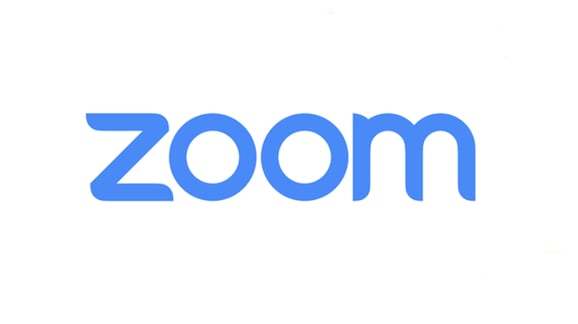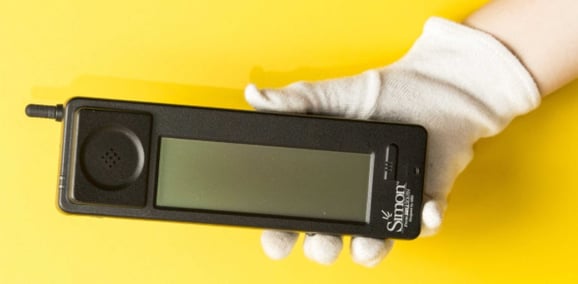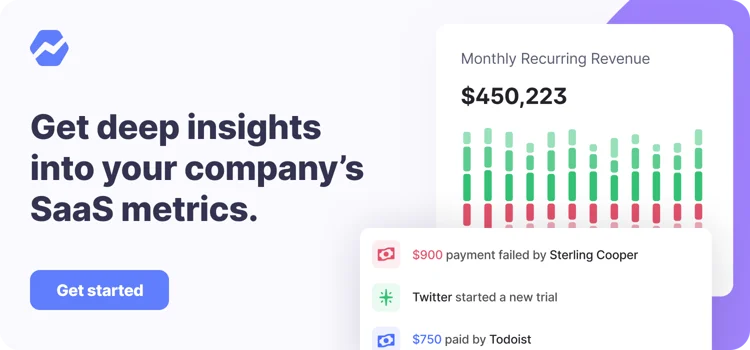Table of Contents
More Founders Journey Articles

Every founder dreams of devising a million dollar idea. An idea that has the potential to change the whole SaaS playing field. Not just a new product; the start of a whole new product category.
What is a product category, and how do you recognize whether your great idea promises to become a new class of its own?
The journeys of developing a product and developing a product category usually start from a similar place. A founder identifies a problem commonly faced by consumers within a specific niche, and decides to exploit this gap in the market by offering a new solution.
The key difference between product and product category essentially springs from the existing competition, and how novel a concept this new solution really is.
A new product can be measured closely against others already on the market, even if some of its features are significantly different.
A new product category, on the other hand, has no direct predecessor or parallel, and thus no existing frame of reference to compare it to conceptually.
Product vs. Product Category: Why does the difference matter?
It might seem like we’re splitting hairs here. ‘How unique is my unique idea’ is a tricky question to answer, especially if you’re currently navigating the nebulous stages of early development.
In reality, most million dollar ideas aren’t dreamt up at all; they lie in wait at the end of a particularly long and treacherous path, taunting the dreamer with mirages of success to come. That being the case, defining from the start whether you’re dealing with a product, or product category, might seem like an impossible task that threatens to stunt the creative flow of your conceptualization phase.
It’s critical to bear in mind, however, that the journey of developing a product category is not only different in nature that of developing a product, it also exists on a completely different scale.
The sooner you can identify whether you’re venturing into the unchartered waters of a new product category, the better you can prepare for its unique challenges and financial burden.
If you’re seeking insights into your business, look no further. Baremetrics maps and analyzes over 26 different metrics to help you track all your financial information in one, easily accessible place. Sign up for the free 14 day trial to try it for yourself.
Product vs. product category: Case studies
Determining whether a solution is a new product, or a new product category, isn’t always straightforward. It requires foresight into your development process, as well as an in-depth understanding of competing services on the market, past and present, notably how they relate to yours.
Here are some case studies of groundbreaking technologies to help define the two differing types of development.
New product: Zoom

Source: Zoom
One of the fastest rising household names of the decade is Zoom. The concept of video conferencing and remote meetings is a familiar one, spearheaded by other well-known services such as Skype and Google Meet (formerly Hangouts).
As a service, Zoom falls well within the confines of an existing product category, one known as meeting solutions.
What can we learn about its skyrocketing success?
Externally to the product itself, recent global circumstances expounded the need for remote video services.
But let’s not undersell Zoom’s key features. The developers identified common grievances with its competitors, and offered a product that point for point provided a superior solution: higher quality video, meeting analytics, cross-integration with other workplace networks, easy screen-sharing, and the option to record meetings and play them back at different speeds (allowing for the highly popular shoot-off function to use the service as a platform to host webinars, and other forms of replayable video content).
Zoom exemplifies a service that understands its user base by offering a sleek and intuitive solution, with no learning curve, at a competitive price point.
New product category: Simon the smartphone

Source: Business Insider
The invention of the smartphone, on the other hand, is a prime example of the birth of a whole new product category.
The first device to earn the smartphone title was IBM’s Simon Personal Communicator (SPC, or IBM Simon to its friends).
This device was unlike anything that came before it, and had the potential to completely revolutionize personal communication. This mobile telephone offered the ability to send and receive faxes and emails, boasted a calendar, clock, scheduling apps, and could even process handwritten information input via a stylus pen.
IBM Simon’s technology was so groundbreaking, no-one knew exactly what to do with it. The device actually failed as a product, if measured solely by its lack of financial success. Only 50,000 units were ever sold, and the manufacturers decided to discontinue the model after a mere six months.
Who reaped the benefits of this technological breakthrough? Simon’s successors, following years behind on the trail carved out by IBM.
The litmus test separating product from product category
None of this is to say that creating a new product category is in and of itself a greater achievement than developing a new product, nor that the journey of product development is any less challenging.
Consider the invention of the lightbulb.
Technologically, the lightbulb remains one of humankind’s greatest advancements. The concept itself of artificially creating light, however, was hardly a new one: before the lightbulb, there was the candle. Before the candle, there was the campfire.
As both the concept of creating artificial light, and equivalent technologies, though inferior, already existed, the invention of the lightbulb is that of a product, not a product category.
Why is that differentiation significant?
Simply put, there was never a need to convince anyone of the usefulness of light, or educate people on how to correctly use it. The understanding was already there, someone ‘just’ needed to develop the solution.
In other words, the main challenges of developing the lightbulb proved to be technological and economical, not one of education, one of product category development’s greatest challenges.
The unique challenges of product category development
1. Education and marketing
Do you have a gadget lying around the house that you’ve never used? Despite promising great functionality, you never got the knack of it? Perhaps the manual got lost. Maybe the learning curve was a bit too steep. And now you regret buying the thing in the first place because you’re getting on just fine without it.
Whether it’s the instruction booklet for building that fancy centerpiece you saw on Instagram, or the webinar that explains how to properly use the complex CRM software you just bought for your team, most groundbreaking new products and services require an education stage.
This breaks down into three phases:
- Convincing the public of the need for such a product
- Familiarizing prospects with your solution, and demonstrating why it’s better than all existing alternatives
- Educating users on how to get the best functionality out of your product to maximise their LTV
This education process is a challenge faced primarily by product category developers, as users have no direct frame of reference to compare this new product type to. As with the case of IBM Simon, it might take years before the public can even grasp the life-changing potential of such a product.
The burden of this early marketing and education phase on budget, timeline, and infrastructure needs, is astronomical.
Essentially, it’s very hard to convince someone to buy a product they don’t understand. Even though you know how much your service can improve their business, it doesn’t mean that they have the resources to adopt it.
Unbeknownst to you, prospects may also have their own barriers to implementation, such as internal company politics or brand loyalties to follow, an inflexibility to add line items in the budget leaving no obvious space for your service, or even labour regulations against replacing manpower with automation.
Ultimately, product category development requires developers to be ready to contend with a vast number of unknowns that have little to do with how good the product is.
One piece of advice: when you’re pitching your product to prospects and investors alike, piggy-back off what they already know to explain your idea. Familiarity breeds confidence, and shared understanding fosters trust.
2. Resources and front-loaded financial burden
If you find yourself developing a product category, be aware that the nature of the challenges you will face, and the scale of resources required to handle these, are on a completely different scale.
As the founder of a start-up, consider this: creating a new product category tends to be 10x more expensive up front compared to product development.
Accordingly, the ROI on the other hand can land at 20-100x higher.
Here are some questions to ask yourself before launching down the product category development path:
- Do you have access to large, ongoing investment capital?
- Do you have the infrastructure, labour and expertise available to respond quickly to extremely rapid growth, should you succeed?
- Can your business, or your investors, support going all-in on such a high risk/reward venture?
3. The double-edged sword of being the early bird
If you develop something great, one thing is for certain. As soon as you gain any kind of traction, the competition will be hot on your heels. Some of those competitors may be large companies with vast resources.
Being there first doesn’t necessarily mean you’ll be there at the end to cash in on your trail-blazing idea, either; there is a chance that your successors will overtake your development. Even registering patents and product trademarks won’t necessarily give you all the protection you need to fight the bigger fish in the pond, should they decide to follow in your footsteps.
The best way to protect yourself from this is to make the most of your lead time on the market.
How big and how long your opportunity window for development is will depend on exactly what you’re creating. If you get stuck at any phase, consider yourself a sitting duck for your competition.
Don’t let this discourage you!
But do be aware that unlike product development where investment can drip in over time, product category development requires you to have access to vast resources from the start so that you can maximise your first-mover advantage.
4. The benefits of developing a product category
Challenges aside, there are a number of attractive benefits to creating a new product category other than the chance of attaining exponential ROI.
Having no frame of reference leads to one unusual advantage: you don’t need to prove that you’re better than the competition, because there is none. Until they catch up, that is, which is when all the traditional challenges of product development kick in.
By then, hopefully you will have maximised your leader advantage, and are either dominating that particular niche, or have sold your idea for squillions of dollars to a forward-thinking investor.
5. A long-term vision
At the heart of building a new product category is the ability to align yourself with shared visions of the future.
Concretely, this translates to products that are sustainable, eco-friendly, and globally accessible.
Thinking about the long-term future isn’t just about planning ahead; it’s about valuing the role and responsibilities of your technology within the broader advancements of economy and culture.
Baremetrics helps founders hit their financial targets with the sharpest business insights on the market. Try it out for yourself using the free trial today.


